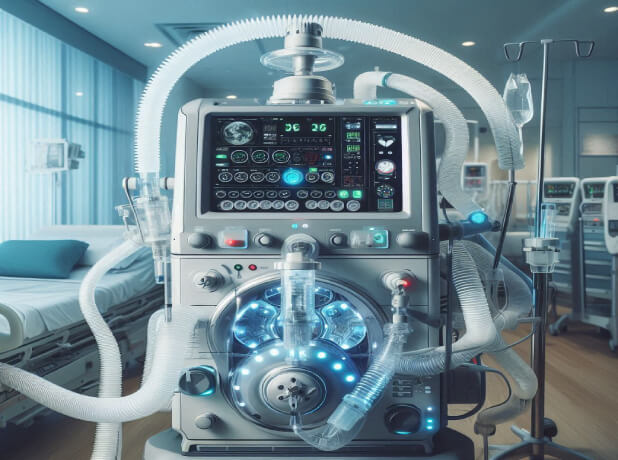Abstract
Mechanical ventilation (MV) is a lifesaving intervention for children with acute respiratory failure (ARF). However, improper application can lead to adverse outcomes, such as ventilation-induced lung injury (VILI), patient self-inflicted lung injury (P-SILI), and ventilation-induced diaphragmatic dysfunction (VIDD). This review discusses the fundamentals of MV, challenges in minimizing its side effects, and strategies to individualize therapy for pediatric patients.
Key Points
- MV in Pediatrics: MV is critical for managing pediatric ARF but carries risks if not tailored to patient-specific needs.
- Types of MV: Includes continuous mandatory ventilation (CMV), intermittent mandatory ventilation (IMV), and continuous spontaneous ventilation (CSV), with volume- or pressure-controlled settings.
- VILI Mechanisms: Comprises barotrauma, volutrauma, atelectrauma, and biotrauma, often caused by excessive pressures or tidal volumes.
- P-SILI Insights: Spontaneous, vigorous breathing in injured lungs can exacerbate stress and strain, leading to further damage, particularly in dependent lung regions.
- VIDD Risks: Prolonged MV can cause diaphragm atrophy due to disuse or injury from excessive workload, affecting extubation success.
- Lung-Protective Strategies: Includes limiting tidal volumes to 5–8 mL/kg and maintaining plateau pressures below 28 cmH₂O to minimize stress and strain.
- PEEP and Recruitment: Positive end-expiratory pressure (PEEP) prevents alveolar collapse, and recruitment maneuvers can improve ventilation distribution but require careful application to avoid overdistension.
- Monitoring Techniques: Parameters such as driving pressure, compliance, and esophageal pressure help optimize MV settings and reduce lung injury risk.
- Pediatric-Specific Challenges: Children’s lungs are more susceptible to injury, necessitating careful adherence to lung-protective ventilation principles, even in non-ARDS settings.
- Future Directions: Emphasis on integrating advanced diagnostics and personalized approaches to balance MV benefits and risks in pediatric populations.
Graphical summary of the main approaches to limiting ventilator-induced lung injury (VILI), ventilator-induced diaphragmatic dysfunction (VIDD), and patient self-inflicted lung injury (P-SILI)
Conclusion
While MV remains indispensable in pediatric critical care, its application demands precision to prevent complications like VILI, P-SILI, and VIDD. Optimizing ventilatory strategies and employing individualized care are key to achieving favorable outcomes.
Watch the following video on “Mechanical Ventilation in the PICU: Addressing Pitfalls to Optimize Patient Care by B. Walsh, et al.” by OPENPediatrics
Open Access This article is licensed under a Creative Commons Attribution 4.0 International License, which permits use, sharing, adaptation, distribution and reproduction in any medium or format, as long as you give appropriate credit to the original author(s) and the source, provide a link to the Creative Commons licence, and indicate if changes were made. The images or other third party material in this article are included in the article’s Creative Commons licence, unless indicated otherwise in a credit line to the material. If material is not included in the article’s Creative Commons licence and your intended use is not permitted by statutory regulation or exceeds the permitted use, you will need to obtain permission directly from the copyright holder. To view a copy of this licence, visit http://creativecommons.org/licenses/by/4.0/.


